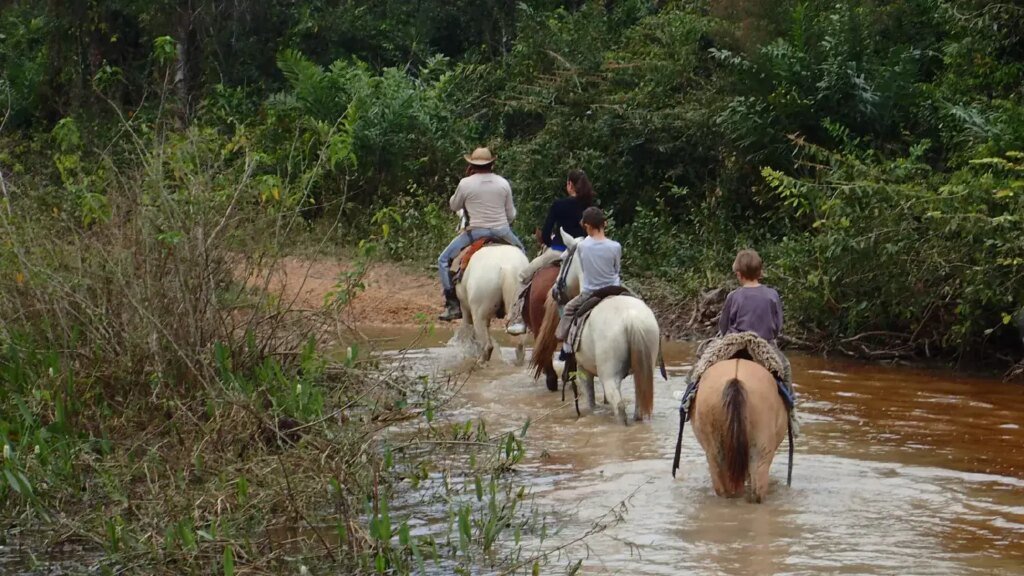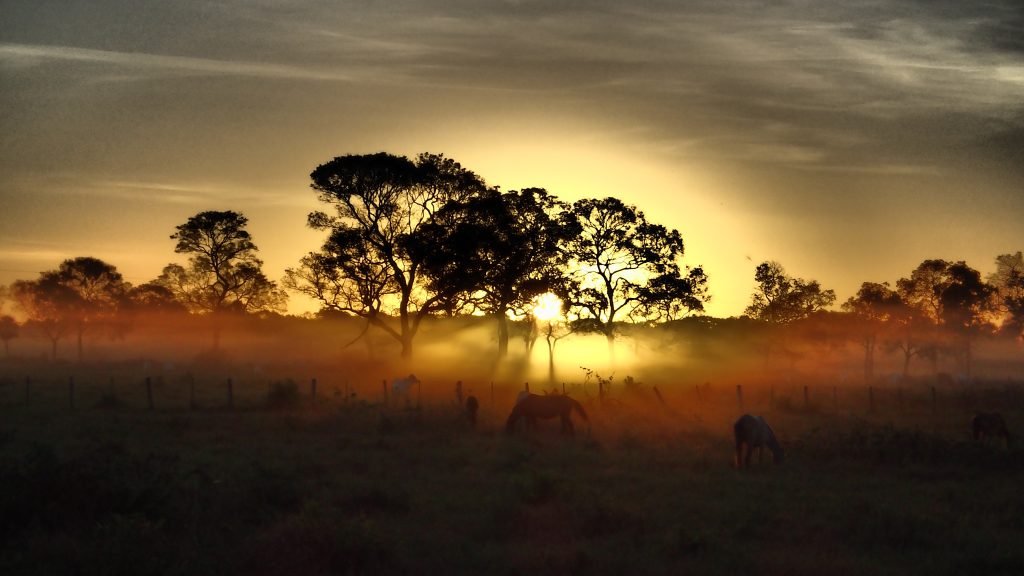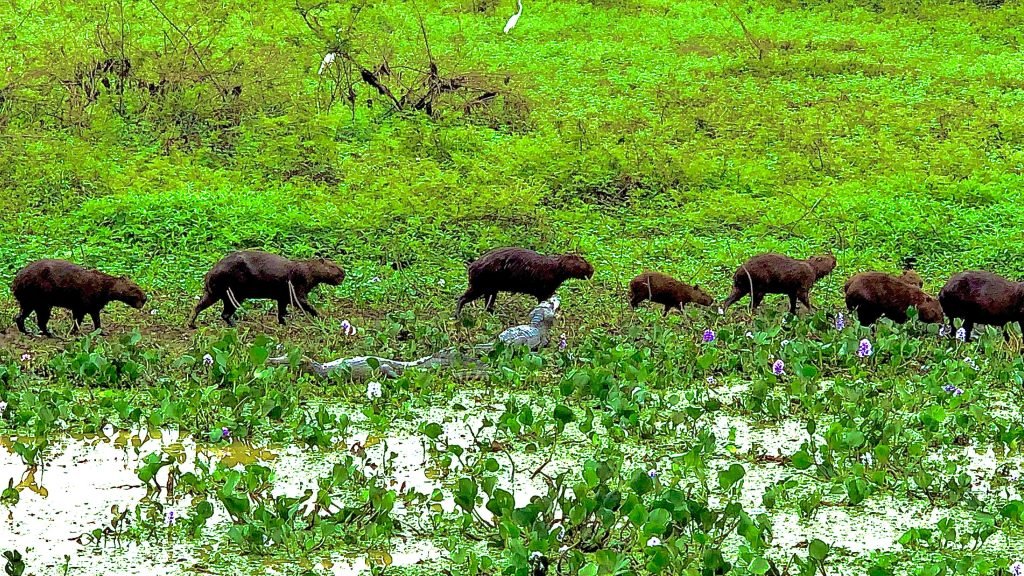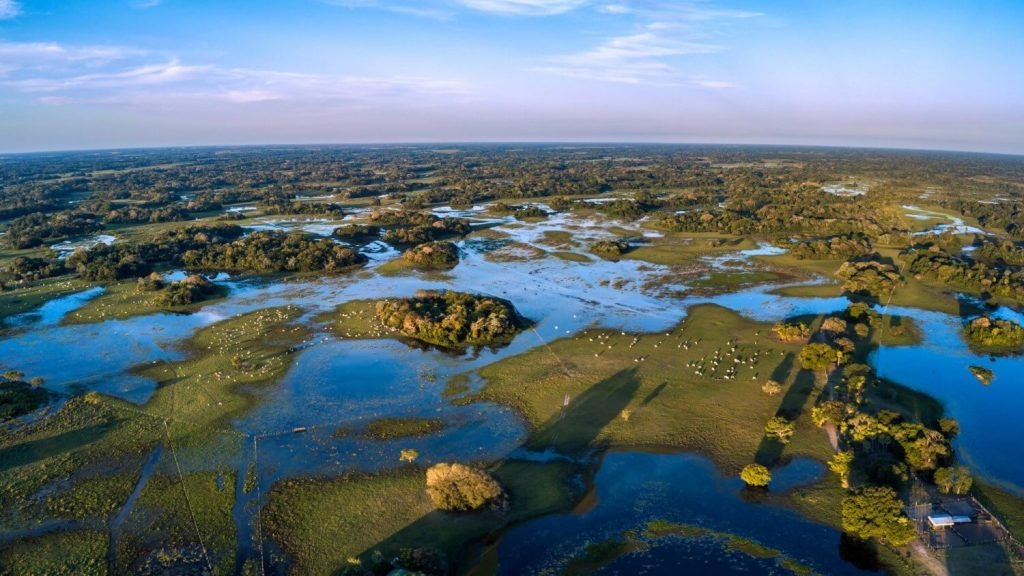The inhabitants of the Pantanal

The inhabitants of the Pantanal have a special relationship with nature and are an essential part of this rich ecosystem. Traditional communities, known as pantaneiros, have been present in this region for generations, and their lives are closely intertwined with the fauna, flora and natural cycles of the biome.
The Pantaneiros have a unique culture, influenced by the peculiar characteristics of the Pantanal. Their traditions, beliefs and way of life reflect a harmonious coexistence with nature and respect for natural resources.
Many of them are fishermen, farmers and cattle ranchers, activities that find in the fertile waters and lands of the Pantanal the ideal conditions to support their families.
Pantaneiros Masters of the Pantanal Waters
- Fishing is one of the central activities in the life of the Pantanal inhabitants, who find in the rivers and lagoons a source of food and income. They have an in-depth knowledge of the habits of the fish and know how to take advantage of flood and drought periods to ensure abundant and sustainable fishing.
Agriculture, Livestock and Handicrafts: Pillars of Everyday Life in the Pantanal
- Agriculture and livestock raising are also an important part of life for the inhabitants of the Pantanal. During the dry season, the fields and pastures become sources of food for livestock and allow the production of staple foods for family consumption.
- Another significant aspect of Pantanal culture is handicrafts. The ability of the inhabitants to work with leather and create products such as saddles, harnesses and utensils is passed down from generation to generation, preserving this unique tradition.
The coexistence of the inhabitants of the Pantanal with the fauna is also remarkable. They know the animals that inhabit the region, their migratory routes and their behavior, which allows them to coexist in balance with the wildlife.
This coexistence demonstrates the wisdom of these communities in respecting and preserving nature, recognizing its importance for their own subsistence.
In addition to the traditional inhabitants of the Pantanal, it also attracts urban dwellers who live in cities near the region. Many of them work in the tourism sector, as guides, innkeepers or owners of establishments that receive visitors interested in exploring the Pantanal.
Daily Challenges and Inhabitants’ Adaptation
- People living in the Pantanal face challenges in their daily routine, such as the need to adapt to climate variations and the seasonality of the region.
- During the rainy season, heavy rains can flood roads and make access to certain areas difficult. In the dry season, water shortages can cause difficulties for agriculture and livestock farming.
Preserving the way of life and ensuring the sustainability of this relationship between communities and nature are crucial aspects of conserving the Pantanal.
Raising awareness of the importance of environmental preservation, encouraging responsible tourism and supporting sustainable practices are essential measures to ensure that these communities continue to enjoy the Pantanal and that this unique ecosystem is preserved for future generations.
In short, the inhabitants of the Pantanal are the guardians of this rich biome, and their culture, wisdom and traditional knowledge contribute to the conservation of this natural jewel. Their harmonious coexistence with the fauna and flora is an example of how it is possible to live in harmony with nature, respecting and valuing the biodiversity of this unique ecosystem.
Festivals and traditions of the Pantanal

The festivals and traditions of the Pantanal are a rich expression of the culture and identity of the communities that inhabit this unique region. With indigenous, African and European influences, celebrations reflect the deep connection between people and nature. They also honor the history and customs rooted in the communities.
Festa do Divino Espírito Santo: Celebrating Tradition with Colors and Spirituality.
- One of the most emblematic festivities of the Festa do Divino Espírito Santo is the Festa do Divino Espírito Santo. This tradition, which dates back to colonial times, is celebrated in several communities in the Pantanal.
- The festival takes place 50 days after Easter. It includes parades, folkloric dances, masses, novenas, typical food and a strong presence of colors and religious symbols. The festeros, in charge of organizing the celebrations, are elected in advance. They are responsible for preserving the tradition of the Divine Holy Spirit.
São João Pantaneiro: Tradition by the River and Piracema Fishing
- Another traditional Pantanal festival is São João, which is celebrated in June, as in other regions of Brazil. However, the Pantanal festivities have their own particularities, incorporating elements of the local culture.
- In addition to the traditional bonfires and quadrilhas, the São João pantaneiro also includes piracema fishing. In this practice, the locals take to the rivers to catch the fish that abound at this time of year, adding a unique dimension to the celebrations.
Carnival is another of the Pantanal’s main festivities. It attracts tourists and locals alike to lively and colorful celebrations that highlight the joy and festive energy of the region.
In some places, the carnival parades take place on boats, navigating the waters of the Pantanal. This makes the experience even more unique and lively, incorporating the natural beauty of the aquatic environment.
Everyday Traditions: Festa do Peão and Life with Cattle
- Religious and folkloric festivals, the traditions of the Pantanal also include activities linked to the daily life of the communities. These activities reflect the rich cultural diversity rooted in the daily practices of the local population. Among them are artisanal fishing, livestock management, handicraft production and typical gastronomy.
- The Festa do Peão, for example, is an event that honors the Pantano tradition of cattle handling. It includes bull and horse riding competitions, as well as animal exhibitions and musical shows.
Pantanal Gastronomy: A Feast of Typical and Artisanal Flavors
- Pantanal gastronomy is also an important tradition, with typical dishes that include fish such as pintado and pacu. In addition, the artisanal and tasty preparation of beef and goat meat is appreciated in this region.
- Chipa, a flour and cheese cookie, is another typical food of the Pantanal. It is present in various celebrations and moments of daily life in the communities of the region.
Preserving and valuing the festivities and traditions is fundamental to keeping the culture and identity of these communities alive. It also ensures that future generations will continue to celebrate and honor the history of this unique ecosystem.
In addition, these fiestas are also an opportunity to attract tourists and visitors. They are interested in experiencing the authenticity of the Pantanal culture and contributing to the local economy.
In short, the festivals and traditions of the Pantanal are a demonstration of cultural richness. They also reflect the deep relationship between people and nature in this region. With their folkloric, religious and daily celebrations, these communities preserve and share their cultural heritage. This makes the Pantanal an even more charming and welcoming place for all who visit.
Curiosities of the Pantanal

The Pantanal is a fascinating biome full of curiosities that make it even more impressive and unique. Its peculiar characteristics and exuberant biodiversity make it a unique region.
In addition, its singular relationship with the local communities makes the Pantanal a true treasure of nature.
Some of the most interesting facts:
The largest alluvial plain in the world:
- The Pantanal is known as the largest continuous alluvial plain on the planet. During the rainy season, much of this vast region is covered by water, transforming it into an incredible flooded landscape.
Exceptional biodiversity:
- The Pantanal is home to an incredible diversity of species, being home to more than 4,700 species of plants, approximately 650 species of birds, 260 species of fish, 122 species of mammals and 93 species of reptiles.
Jaguar – the queen of the Pantanal:
- The Pantanal is one of the best places in the world to spot the jaguar, the largest feline in the Americas. The region has one of the largest populations of this majestic predator. This makes it a privileged destination for the observation of these magnificent animals.
Hyacinth macaw and tuiuiú:
- Other emblematic species of the Pantanal include the hyacinth macaw, one of the largest and most beautiful birds in the world. In addition, the tuiuiú, symbol of the Pantanal and Brazil, also stands out among the region’s fauna. Both are often spotted during photographic safaris in the region.
Meeting of the waters:
- In the Pantanal, it is possible to observe the phenomenon known as the “Meeting of the Waters”. In this event, crystal clear rivers meet muddy rivers, creating a remarkable visual separation between the waters. This mixture of colors is an impressive visual spectacle.
Flora of the Pantanal:
- The vegetation is adapted to its seasonal conditions. During the dry season, grasses and shrubs predominate. In the rainy season, aquatic vegetation flourishes, creating an ideal environment for wildlife.
Traditional communities:
- The Pantanal is home to traditional communities, such as the Pantaneiros. These communities live in harmony with nature and maintain ancestral traditions, such as artisanal fishing and cattle ranching.
Fire and natural cycles:
- Natural fires are common in the Pantanal during the dry season. They are part of the natural cycles of vegetation renewal. However, in years of extreme drought, fires can be more intense and pose a risk to fauna and flora.
Haciendas in the Pantanal:
- Many haciendas have opened their doors to tourism. They offer visitors the opportunity to experience the culture and life of the Pantanal. They also contribute to the conservation of the region.
Natural World Heritage Site:
- The Pantanal is recognized as a Natural World Heritage Site by UNESCO. This recognition highlights its importance and value for the global conservation of biodiversity.
These curiosities make the Pantanal a unique and attractive destination, where nature and culture meet in a fascinating symbiosis. The richness of this biome captivates people from all over the world. Its complex network of wildlife makes it a truly special and inspiring place.





